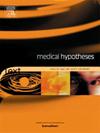Positive sentinel lymph node biopsy on promotion of metastasis: An unexpected effect?
IF 2.1
4区 医学
Q3 MEDICINE, RESEARCH & EXPERIMENTAL
引用次数: 0
Abstract
The paradigm of most metastases has been interpreted as an orderly pattern of spread from the primary tumor to sentinel lymph nodes (SLNs). SLN biopsy (SLNB) has long been considered the standard of care for staging malignancy and guiding treatment. However, the process of SLNB may have awakened or inadvertently provided more “seeds” and/or “soil” to the early anchored tumor foci in regional or distant sites from the “disturbed” SLNs. Furthermore, tumor-positive SLNs are excised, and the angiogenesis inhibition of the distant metastasis dormancy foci is attenuated by the cessation of anti-angiogenic extracellular matrix proteins released from the tumor foci in the SLNs. Here, we hypothesize that tumor-positive SLNB risks the promotion of metastasis. The strong correlation between positive SLNB and consequent metastasis is unexpected but can be fatal. Therefore, verifying the phenomenon and exploring the mechanisms involved is essential to allow steps to be taken to offset this highly potential iatrogenic complication.

求助全文
约1分钟内获得全文
求助全文
来源期刊

Medical hypotheses
医学-医学:研究与实验
CiteScore
10.60
自引率
2.10%
发文量
167
审稿时长
60 days
期刊介绍:
Medical Hypotheses is a forum for ideas in medicine and related biomedical sciences. It will publish interesting and important theoretical papers that foster the diversity and debate upon which the scientific process thrives. The Aims and Scope of Medical Hypotheses are no different now from what was proposed by the founder of the journal, the late Dr David Horrobin. In his introduction to the first issue of the Journal, he asks ''what sorts of papers will be published in Medical Hypotheses? and goes on to answer ''Medical Hypotheses will publish papers which describe theories, ideas which have a great deal of observational support and some hypotheses where experimental support is yet fragmentary''. (Horrobin DF, 1975 Ideas in Biomedical Science: Reasons for the foundation of Medical Hypotheses. Medical Hypotheses Volume 1, Issue 1, January-February 1975, Pages 1-2.). Medical Hypotheses was therefore launched, and still exists today, to give novel, radical new ideas and speculations in medicine open-minded consideration, opening the field to radical hypotheses which would be rejected by most conventional journals. Papers in Medical Hypotheses take a standard scientific form in terms of style, structure and referencing. The journal therefore constitutes a bridge between cutting-edge theory and the mainstream of medical and scientific communication, which ideas must eventually enter if they are to be critiqued and tested against observations.
 求助内容:
求助内容: 应助结果提醒方式:
应助结果提醒方式:


